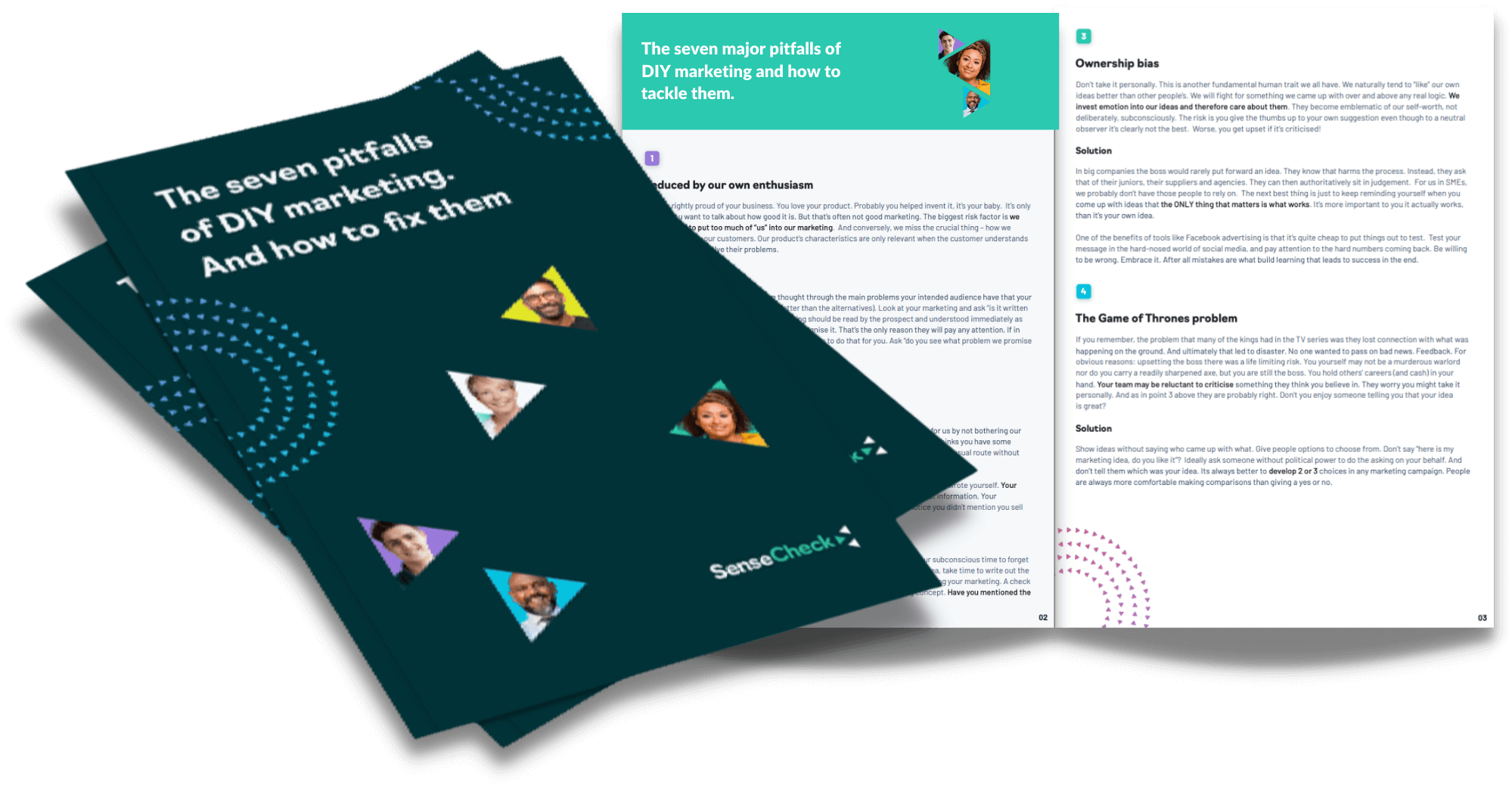
As business owners, we’re often living inside our own bubble. We’re so passionate about our product, we wonder how anyone could possibly not want it. We know all its benefits inside and out. We know how good it tastes or what great value it is. In all respects we are one hundred per cent in. How could we think otherwise? We are like a parent with a child!
But there is a risk that, in our enthusiasm, we forget that our prospects are probably already pretty content with their current solutions, or at least content enough not to want to risk change and all the uncertainty that brings. They don’t yet know the benefits of our product, nor do they have any reason to believe us when we tell them.
Plus, we all have years of experience of buying things that turned out to be less good than we’d been told. Even buying things that turned out to be a waste of money. So, we have a natural skepticism of seemingly impressive messages.
In short, people are just not interested in being “sold” to. In fact, they probably hate it.
Getting a new customer’s buy in is, of course, an even bigger obstacle when it comes to pricey products or the long, drawn-out purchasing cycle of B2B sales. The stakes are higher and the cost of getting it wrong is far greater.
There is a time factor here too. As well as being uncertain, the benefits of change are always further into the future. Future means riskier [notwithstanding the human bias to pay more attention to things that are immediate].
In contrast, the costs and risks of change are always far more certain, better known and are staring our customers in the face. They are going to happen with one hundred per cent certainty. Right now.
Our solution, therefore, has to clearly offer benefits that seem much, much greater than the perceived costs and risks. Something like 3:1 is a minimum.
Professor Jonah Berger introduced the idea of what he calls the “anti-persuasion radar” that we all operate. A lifetime of hard-won experience has taught us that if someone is “pushing” something, we should be wary.
Psychologists also speak about an idea called “reactance”, which is the sense of discomfort we get if we feel our freedom and choice are being restricted. When we are told we “ought” to do something, for example by sales or marketing activity, we don’t appreciate it. We prefer to feel free to make decisions unencumbered by others’ assertions.
Smart sales and marketing people should be actively trying to avoid as much reactance from customers as possible and, to help with this, Berger highlights four ways you can give your customers a sense that they are still in control, lowering their reluctance and reducing the reactance.
First, try to give a range of sensible options that allow the customer to choose. You can “manage” the options to suit your goals but do so carefully to avoid the perception of manipulation. Make them genuine options, even if one seems more sensible.
Second, ask very well thought out questions which help the customer identify their own benefits and get a handle on the costs, so they can make the trade off and get to the conclusion under what they feel is their own steam. This increases their commitment and lowers their resistance.
Third, identify a gap between what someone already thinks [their rational sense] and what they do [which may be more emotional, fear driven or perhaps habitual]. If they can see that a different action would match their current perceptions better, they will influence themselves to change. You trigger their own self persuasion.
Fourth, and perhaps most importantly, we must recognise the real human in the process. We are all more likely to be persuaded by someone we like, respect and trust. Key to this is finding a connection with someone at a person-to-person level before trying to sell to them.
Obviously, this works better in one-to-one sales interactions, but it can be a key goal of market research, too, underpinning wider marketing and brand activity. After all, a brand is like a person we trust at an emotional level. We must strive to get right under the skin of what makes a customer “tick” and what their cares and concerns truly are. Genuine curiosity likely will uncover things that help support your message.
So, park your own enthusiasm and belief. Yes, these drive your business along but in this context, they can be your enemy. Resist just “selling”.
This is not easy but, as professional marketers, it’s key to our success.
Put yourself in the minds of the sceptical and uninformed prospect. Think about how you yourself get persuaded to buy something. I bet you don’t just jump because of an ad or a phone call, do you?
And, if you want to double check that your work is ticking these boxes, you could consider getting an objective third party second opinion. Your innate enthusiasm will likely make you think your marketing is awesome when maybe it’s not. Marking your own work is truly difficult from inside your bubble.
Roger Jackson – founder and CEO of SenseCheck
